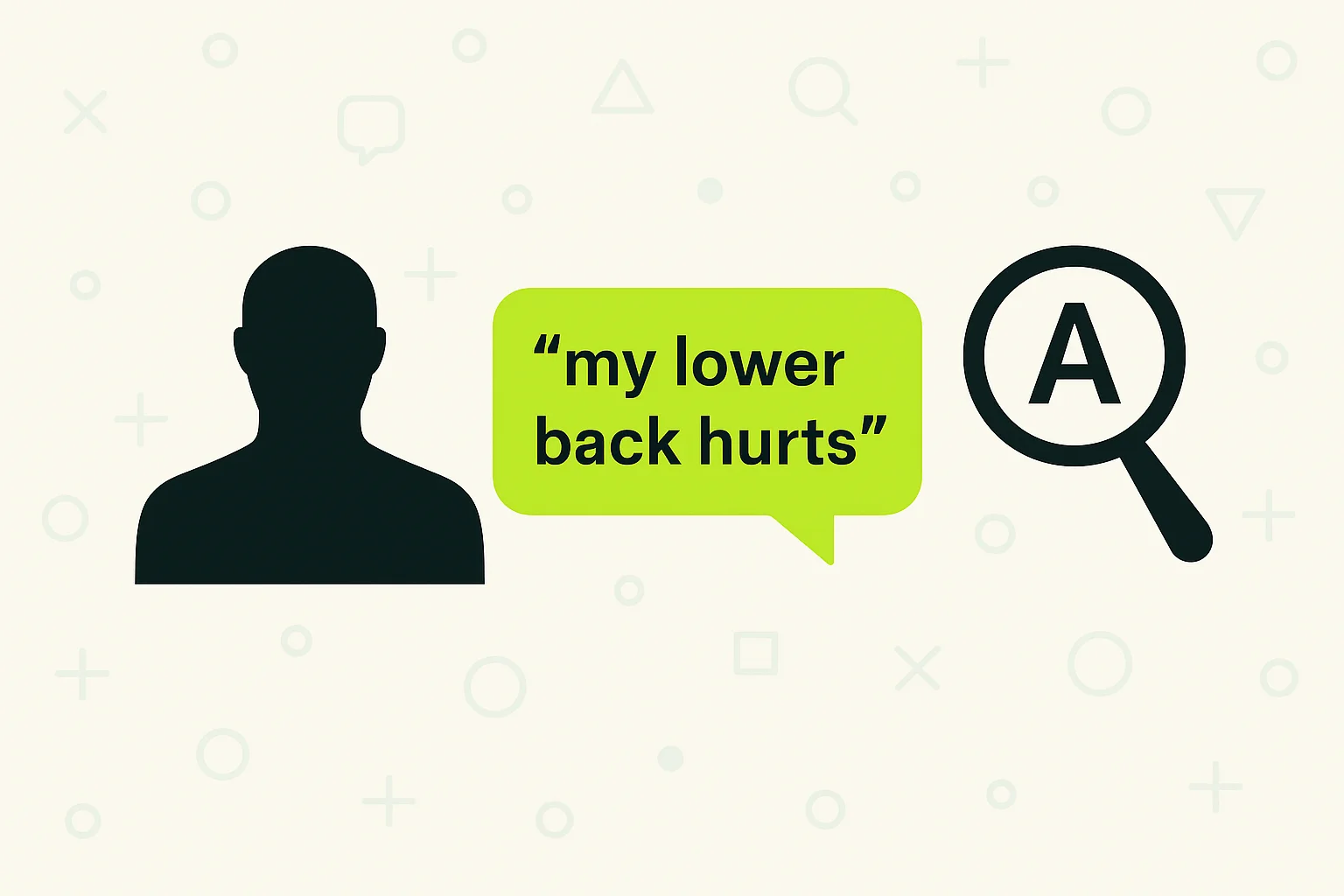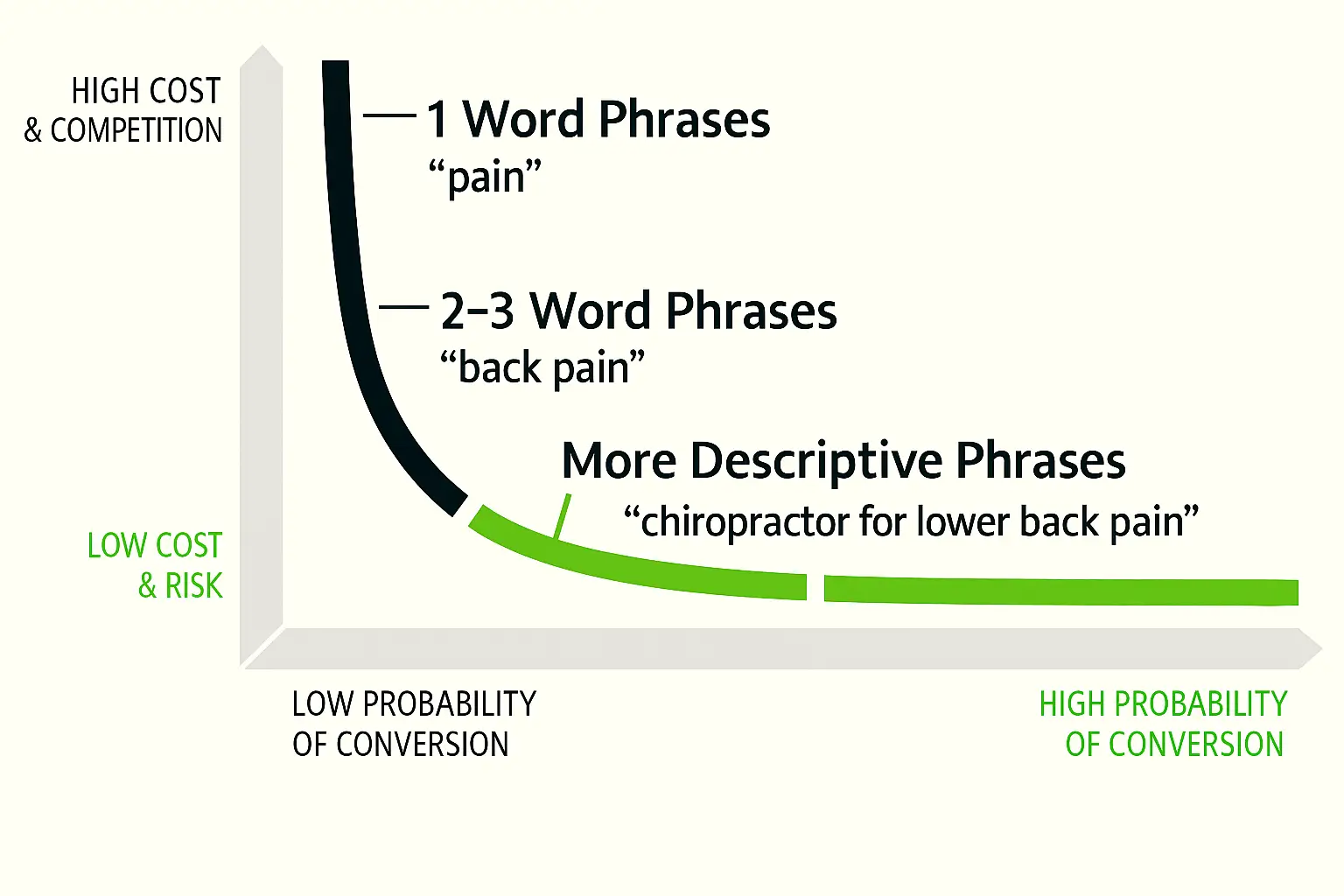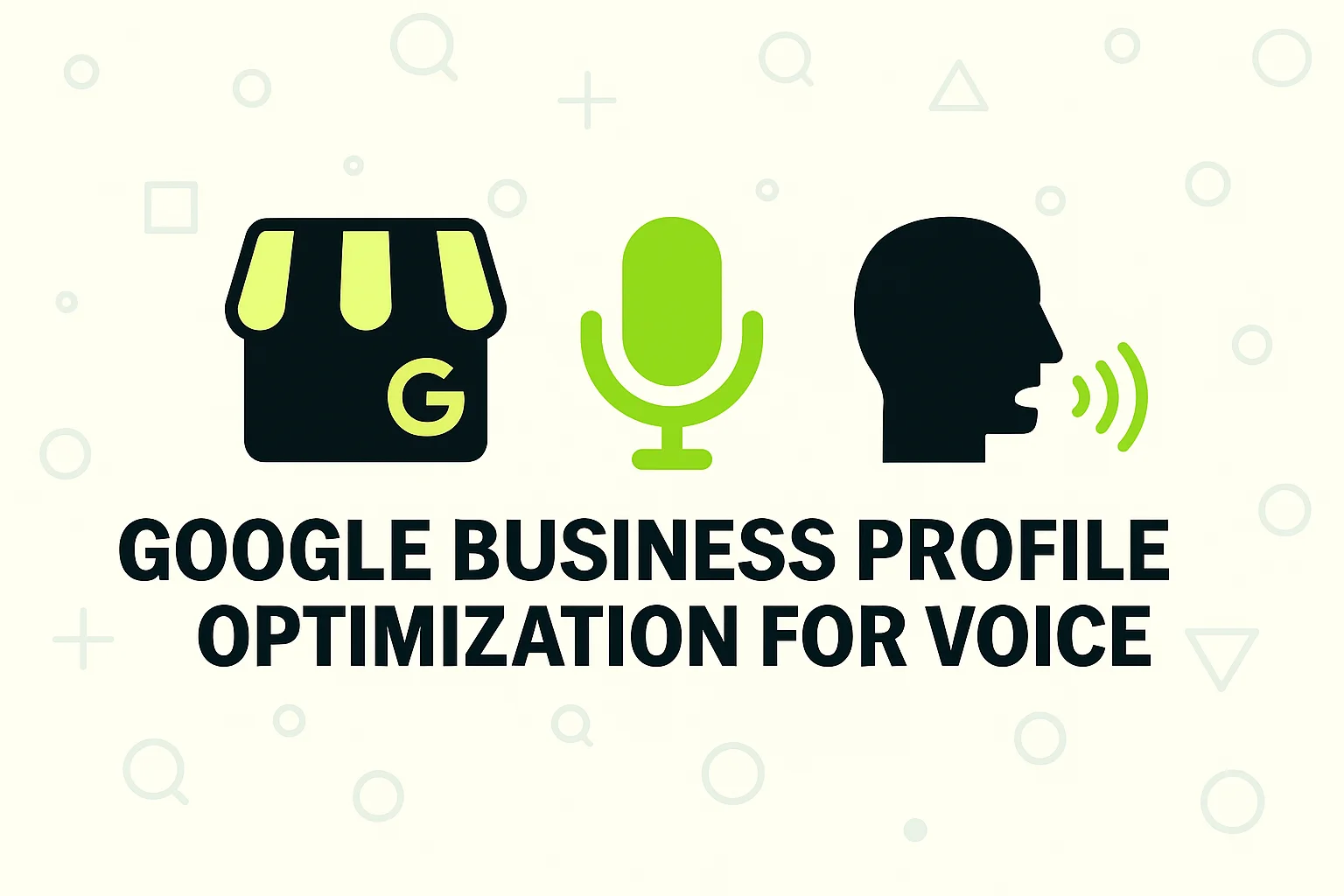“Hey Siri, find a chiropractor near me.”
Sounds like a win, right? Someone’s in pain, they’re looking for help, and they’re using voice search to find it.
But here’s the catch: even if your website looks great, even if you’ve done SEO, even if you’ve been in business 15+ years… your clinic might still be invisible.
Because voice search plays by different rules.
And right now, most chiropractic clinics in places like Vancouver, WA or Portland, OR are getting left out of the results—not because they’re not great, but because their site isn’t talking the way people search.
Let’s change that.

Voice Search: A Different Ballgame
When people use voice, they don’t speak in keywords. They ask real questions, just like they would in a conversation.
Someone typing might Google:
“chiropractor Vancouver WA”
But someone talking says:
“Who’s the best chiropractor near me that takes same-day appointments?”
This matters because voice assistants like Siri, Google Assistant, and Alexa are built to surface direct, natural-language answers.
If your site isn’t structured for that? You won’t show up.
A few things voice search looks for:
- Plain, readable language
- Frequently asked questions
- Quick answers (think: 40-60 word summaries)
- Locally relevant content
This shift toward conversational search is massive—and it’s especially critical for mobile-heavy, service-based businesses like yours.

Start with These 3 Pages—Then Optimize Them for Voice
You don’t need a full site rebuild. Start with these three areas and tune them up.
1. Homepage
Clearly answer:
- Who are you?
- Where are you located?
- What problems do you solve?
Make it scannable. Use city-specific language:
“Serving Vancouver, WA and Portland, OR with same-day chiropractic care.”
2. Service Pages
Each service should have its own page.
Each page should answer things like:
- “Who is this for?”
- “What does it treat?”
- “Is it safe?”
- “How soon can I book?”
Use plain, clear headlines.
Write the way your patients talk.
3. FAQ Page
This is your secret weapon.
Create 8–10 real questions your patients ask all the time.
Write short, 2–3 sentence answers—clear and conversational.
Google loves FAQs for voice search.
It can pull those answers directly into voice results.

They treat SEO like a checkbox—optimize a few keywords and forget about it. But search is dynamic. People change how they search, and if your site stays static, it falls behind fast.
You don’t need to do everything—just be a little more relevant than your competitors. Matching how people talk today puts you ahead without needing more content or money. It's smarter, not harder.
Speak Your Patients' Language
Let’s be real—most people don’t wake up and search “chiropractor near me” just because they’re curious.
They search based on what they’re feeling.
It’s usually something like:
- “Back pain after sleeping wrong”
- “Neck pain after car accident in Vancouver”
- “Prenatal chiropractor East Portland”
- “My shoulder keeps popping when I move it”
These are what we call long-tail keywords.
They’re specific, low-competition, and they usually come from people who are ready to book—not just browse.
The best part? You already treat these problems every day. You just haven’t created content that mirrors how people actually search for them.
Here’s a simple way to rethink your SEO:
- Condition-based searches: “Fix tech neck in Vancouver”
- Symptom-driven terms: “Sharp pain between shoulder blades when breathing”
- Demographic-specific phrases: “Prenatal chiropractor SE Portland”
- Incident-related searches: “Chiropractor after a car accident”
When you build pages, blog posts, or service listings around these types of real-world problems—using real-world language—you stop trying to compete with everyone else... and start showing up for the people who are already looking for what you do.
That’s where local SEO starts working for you.

Most local businesses throw money at SEO and still stay invisible. This guide shows you why—and how to change it.
This free SEO guide gives you a proven framework for keyword research, content that ranks, and backlinks that actually work. (Click Image to Download)
Long-Tail Keywords Are Your Secret Weapon
Here’s a little truth bomb: if you’re still trying to rank for “chiropractor near me,” you’re fighting in a street brawl with every clinic in your city.
And let’s be honest—Google isn’t just choosing who ranks based on who’s best.
It’s choosing who’s most specific.
That’s where long-tail keywords come in.
These are the full-sentence, hyper-specific phrases people are actually speaking into their phones:
- “chiropractor open Saturday in Vancouver WA”
- “help for stiff neck after sleeping wrong”
- “car accident chiropractor with massage therapy in Portland”
They don’t get thousands of searches a day.
But they don’t have to.
Because the people searching them?
They’re not browsing.
They’re booking.
If you create content—pages, blog posts, FAQs—that directly answer these types of searches, Google starts matching you with people who actually need what you do.
That means less traffic, but way better traffic.
You don’t need more clicks.
You need more people ready to say yes.

Don't Forget Your Google Business Profile
Siri and Google pull tons of voice search data straight from your GBP.
If yours is bare, outdated, or inconsistent—you’re done before you start.
Here’s how to fix it fast:
- Make sure your hours, services, phone number, and categories are current
- Add real photos of your clinic and team
- Use the Q&A section—fill it out with helpful questions
- Post updates weekly (even short ones)
This tells Google: “We’re active. We’re accurate. We’re local.”

Test It Yourself
Pick up your phone and try this:
- “Chiropractor open now in Vancouver Washington”
- “Best prenatal chiropractor in Portland”
- “Help with neck pain after a car crash near me”
If your clinic doesn’t come up—you now know why.
Go back to your site, your content, and your GBP—and make sure you’re answering those exact questions.
Because if Siri can’t find you… your next patient can’t either.

To Wrap It Up
Voice search is changing how people find care—and fast.
It’s no longer about stuffing your site with keywords or hoping your homepage does all the heavy lifting.
It’s about building content that talks like your patients do, answers what they’re asking, and shows Google (and Siri) that you’re the best local option.
And here’s the best part: most clinics still haven’t caught on.
If you move now—clean up your copy, tighten up your Google Business Profile, and answer the real questions your patients ask—you won’t just show up.
You’ll own the results.

FAQs
1. What is voice search SEO and why should chiropractors care?
Voice search SEO is about optimizing your site so it shows up when people use Siri, Alexa, or Google Assistant. More people are searching this way than ever—and they’re often ready to book.
2. What’s the difference between regular keywords and long-tail keywords?
Regular keywords are broad (“chiropractor Portland”), while long-tail keywords are specific (“best chiropractor for tech neck in SE Portland”). Long-tail phrases convert better and have way less competition.
3. How do I know which long-tail keywords to target?
Start with what your patients say out loud. Use Google’s autocomplete, “People Also Ask,” and tools like AnswerThePublic. Your front desk is also a goldmine—write down how people describe their pain.
4. Is a Google Business Profile really that important for voice search?
Yes—Siri and Google Assistant often pull voice results directly from GBP. An optimized profile gives you a major leg up.
5. How long does it take to see results from voice search optimization?
If your foundation is solid (site speed, mobile-friendly, local content), you can start seeing improvements in 30–60 days. Real traction builds over time with consistent content updates.

Voice search isn’t the future—it’s happening right now. Make sure your clinic shows up when someone says “chiropractor near me.” It’s not about being loud—it’s about being found.
Blogs You May Like
Let's Walk You Through The System
See what it would look like for your business—step by step.



.webp)


